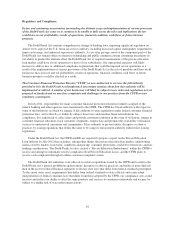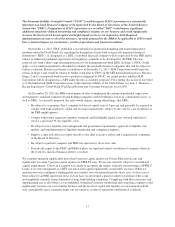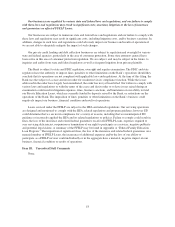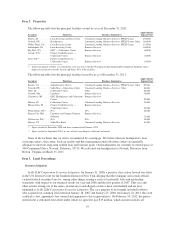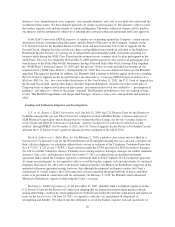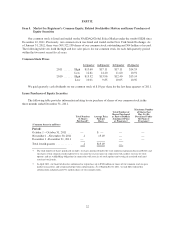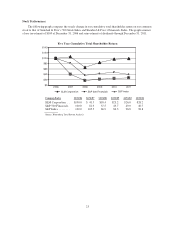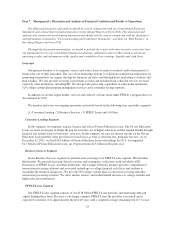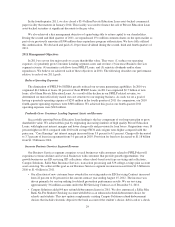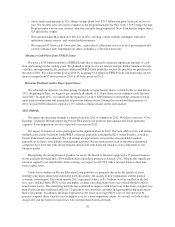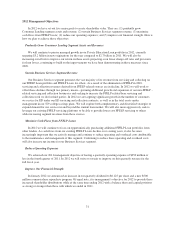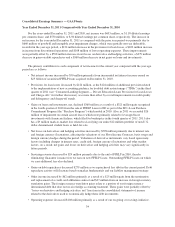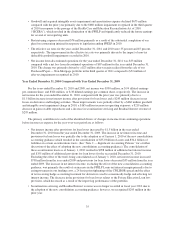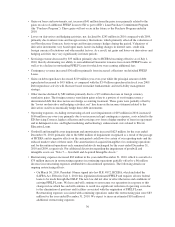Sallie Mae 2011 Annual Report Download - page 28
Download and view the complete annual report
Please find page 28 of the 2011 Sallie Mae annual report below. You can navigate through the pages in the report by either clicking on the pages listed below, or by using the keyword search tool below to find specific information within the annual report.We actively seek to acquire FFELP Loan portfolios to leverage our servicing scale and expertise to generate
incremental earnings and cash flow. Of our total FFELP Loan portfolio, 94 percent was funded with non-
recourse, long-term debt; 76 percent of our FFELP Loan portfolio being funded to term by securitization trusts,
15 percent funded through the ED Conduit Program which terminates on January 19, 2014, and 3 percent funded
in our multi-year ABCP facility. This segment is expected to generate a stable net interest margin and significant
amounts of cash as the FFELP portfolio amortizes.
Other
Our Other segment primarily consists of the financial results related to activities of our holding company,
including the repurchase of debt, the corporate liquidity portfolio and all overhead. We also include results from
smaller wind-down and discontinued operations within this segment.
Key Financial Measures
Our operating results are primarily driven by net interest income from our student loan portfolios (which
includes financing costs), provision for loan losses, the revenues and expenses generated by our service
businesses, and gains and losses on loan sales and debt repurchases. We manage and assess the performance of
each business segment separately as each is focused on different customers and each derives its revenue from
different activities and services. A brief summary of our key financial measures are listed below.
Net Interest Income
The most significant portion of our earnings is generated by the spread earned between the interest income
we receive on assets in our student loan portfolios and the interest expense of funding these loans. We report
these earnings as net interest income. Net interest income in our Consumer Lending and FFELP Loans segments
are driven by significantly different factors.
Consumer Lending Segment
Net interest income in this segment is determined by the Private Education Loan asset yields, which are
determined by interest rates established by us based upon the credit of the borrower and any co-borrower and the
level of price competition in the Private Education Loan market less our cost of funds. Our Private Education
Loans earn variable rate interest and are funded primarily with variable rate liabilities. The Consumer Lending
segment’s “Core Earnings” net interest margin was 4.1 percent in 2011 compared with 3.9 percent in 2010. Our
cost of funds can be influenced by a number of factors including the quality of the loans in our portfolio, our
corporate credit rating, general economic conditions, investor demand for Private Education Loan ABS and
corporate unsecured debt and competition in the deposit market. At December 31, 2011, 56 percent of our Private
Education Loan portfolio was funded with non-recourse, long-term debt; 51 percent of our Private Education
Loans being funded to term by securitization trusts.
FFELP Loans Segment
Net interest income will be the primary source of cash flow generated by this segment over the next 20 years
as this portfolio runs off. Historically, interest earned on our FFELP Loans was primarily indexed to commercial
paper rates and our cost of funds was indexed to three-month LIBOR, creating the possibility of significant basis
and repricing risk related to these assets. Recent changes to the applicable law will allow us, beginning in the
second quarter of 2012, to index interest earned to one-month LIBOR rather than commercial paper rates,
significantly reducing basis and repricing risk on $130 billion of our FFELP Loans. The FFELP Loans segment’s
“Core Earnings” net interest margin was 0.98 percent in 2011 compared with 0.93 percent in 2010.
The major source of variability in net interest income is expected to be Floor Income. Pursuant to the terms
of the FFELP, certain FFELP Loans, in certain situations, continue to earn interest at the stated fixed rate of
26


